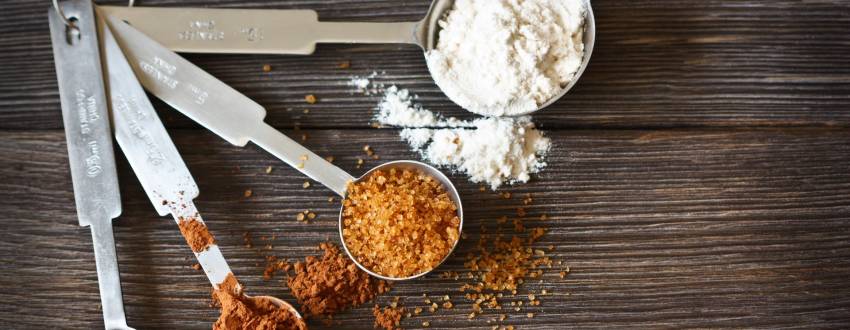By: Tamar Teitelbaum
Mom, Homecook, Blogger
It’s dinnertime. You enter the kitchen ready to cook up a delicious pepper steak recipe from the Internet. The only problem is that the recipe serves 4, and you are feeding 9. Most of the recipes on the web are written for a “typical family of 4.” Do you know how to make that recipe work for you? If you have a house full, keep reading!
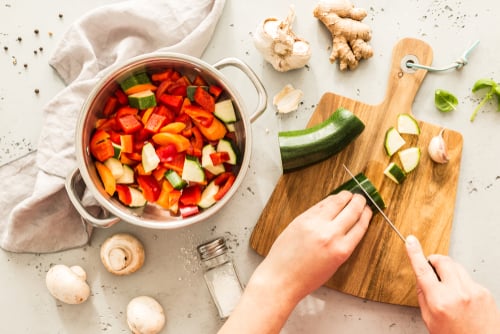
Calculating Portions
The first step to getting the recipe correct is to figure out how many portions your family needs. In recipes that make many of one thing, the “servings” usually indicates the number it makes. For example, a cupcake recipe that serves 24 makes 24 cupcakes. In this case, just add up how many individual items per person.
For all other recipes, the servings will equal one adult portion. This does not take into account “seconds” or picky eaters, etc. In general, 2 children = 1 adult portion. Teenagers or very big eaters should be calculated at 1-½ portions each.
In my family, I have 4 adults and 3 children ages 9, 4 and 2 in the house. I know that I eat a small portion and that my husband and the two adult boys eat larger portions. The three littles are unpredictable. 3 young children account for 1-½ servings. I eat a smaller amount but still count myself as 1. My husband and the boys account for 4-½ servings (1-½ each). Add that all up, and I cook for 7. For most recipes, I round that up to 8. The goal is that at the end of the meal, there will be a small amount left over, one lunch portion or less. That’s the bar for success.
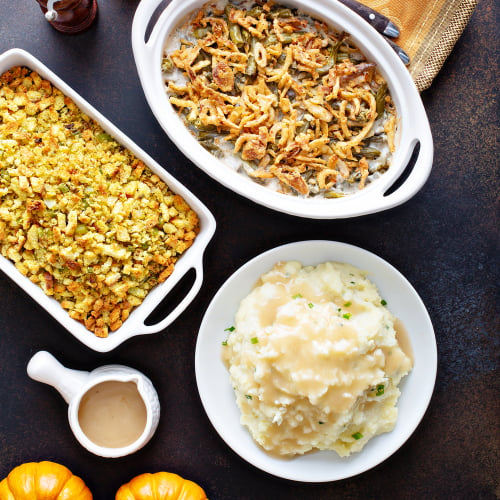
Using Built-In Recipe Converters
Some online recipe sites will include a converter for the number of servings. So say it’s 4 servings, just edit it to 5 servings and the webpage will recalculate all the ingredients for you. Sound great? This feature is just a math program. It will calculate the fractions and spit out the result no matter how unhelpful that answer is. For example, 1 egg in the above scenario would yield an answer of 1-¼ eggs. That’s pretty useless for most practical, everyday homecooks. This is why I ignore the feature all together. Instead, consider multiplying the entire recipe by 1.5 or double when appropriate. I have even done the occasional triple recipe!
Doubling A Recipe
It seems simple. Take a recipe for 4 and just double everything. Sometimes that will work out, but there are many cases when it doesn’t quite. The reason it might fail is that ratios aren’t perfect. Let’s say dinner is pepper steak and rice. Double the full pepper steak recipe, but it may not be necessary to double the rice. Take a moment to review the recipe and consider how it will be eaten.
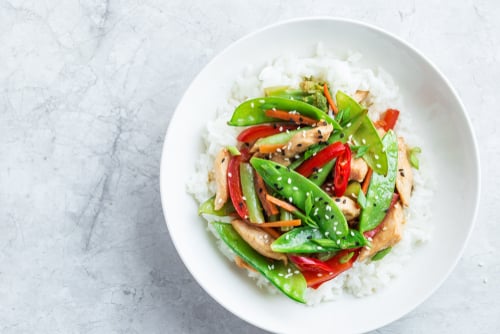
Next, consider the size of your pans. Can you accommodate a double portion all at once? Or will you have to cook twice? If making food in a sauce, then only double the sauce if cooking two separate batches. If cooking double the food in one pan, then only 1-½ times the sauce portion of the recipe. Some liquid cooks out during each batch, therefore cooking all at once leads to less evaporation than cooking in two batches.
Lastly, consider how your family eats a specific type of meal when calculating how much to make.
Doubling the main does not mean sides need to be doubled. If making steaks, for example, I make 1 per adult, plus 1 for my kids to share and compensate with an ample supply of sides. That way there is no waste of an expensive ingredient.
The Ever-Difficult 1-½ Times The Recipe
Most home cooks I talk to have the most trouble when they want to increase the recipe a bit, but not actually double it. 1-½ times a recipe can be a challenge when it comes to calculating the correct measurements. It’s also difficult because there might be a leftover ½ can of diced tomatoes or ½ box of pasta, etc. If it’s an ingredient that you can use up another way, then don’t worry about it. Otherwise, consider doubling the recipe and freezing the leftovers instead. To help with making these recipe conversions, there is an easy conversion guide at the end of this article.
An Even Bigger Family
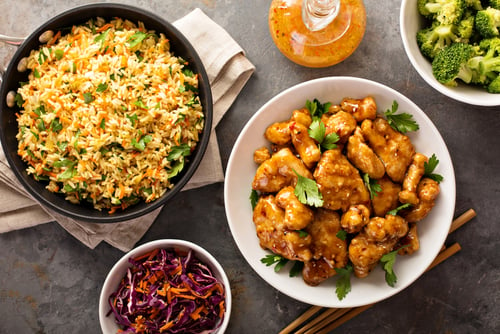
If doubling a recipe is still too small, then there are a few options. Some recipes can be tripled, especially if you have very large pans. Many times, it is easier and more fun to increase the number of dishes served, rather than the size of the dishes. Going back to the pepper steak from the beginning of this article. Make the pepper steak and rice, but also add some chicken stir fry. By including a complimentary main or extra sides, the meal as a whole will stretch further without overcrowding your pans. My mother-in-law always says, “If you have an unexpected guest or two, just whip up an extra side dish and you are all set.”
Special Consideration For Baking
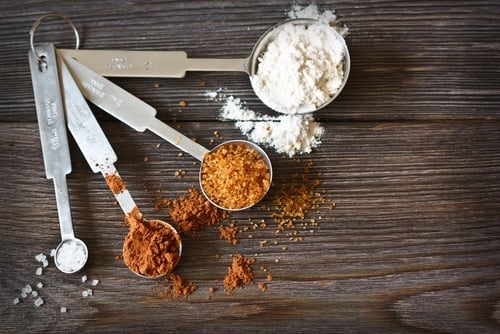
Now that you’ve gotten a handle on recipe conversions, you may feel ready to double your next cake. Please don’t. Baking recipes are tricky. As a frequent baker and recipe writer, I’m going to give the inside scoop. Bakers create the recipe by weight first. All the ratios are based on the weight of each ingredient on a scale. After the ingredients are weighed, they are then measured for volume. In order to make the measurements usable, that volume will be rounded up or down to an easy measurement. A doubled recipe means a key ingredient that was rounded down slightly is now very short (or the reverse), which changes the ratio completely. This can cause a baked recipe to fail or respond unpredictably (think..”Why did my cake grow right out of the pan and pour batter all over the bottom of the oven?” kind of issues). It’s best to bake according to the recipe and make multiple batches rather than doubling.
Next time that perfect recipe just doesn’t make enough, multiply the ingredients using the chart below, or include additional dishes and sides to serve more people with ease. Bitayavon!
Table: Easy Reference Guide for Multiplying Recipe Measurements
To download this table, click here.


